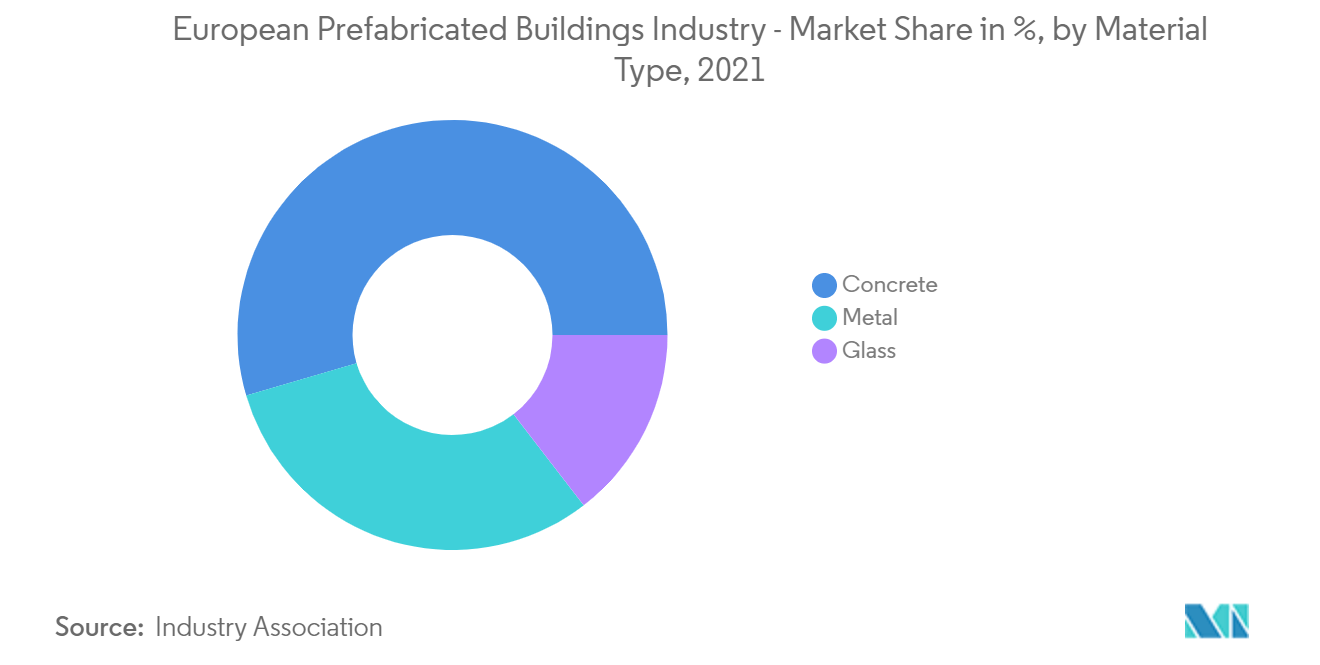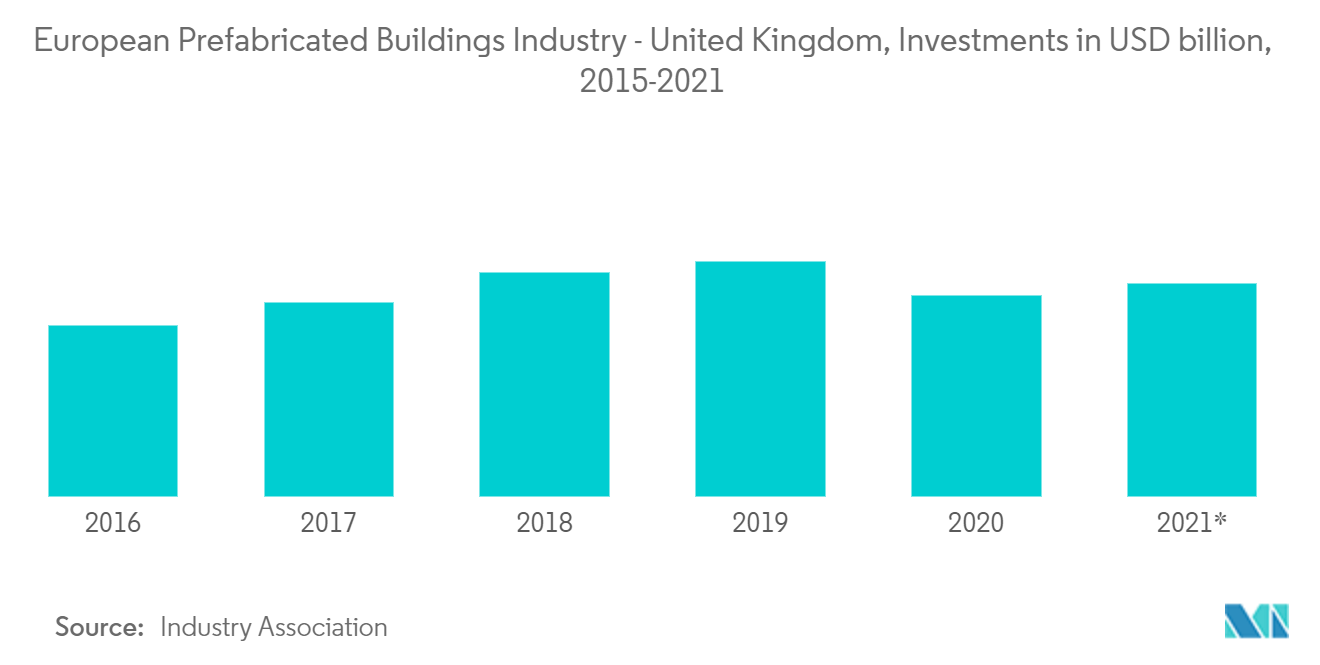Market Trends of Europe Prefabricated Buildings Industry
This section covers the major market trends shaping the Europe Prefabricated Buildings Market according to our research experts:
Wooden Prefabricated Buildings Hold the Largest Share in the Sector
In Italy, the prefabricated market for wood goods is expanding, as seen by the increased production of cross-laminated timber (CLT). CLT output in the "DACH" region (Germany, Austria, and Switzerland), the Czech Republic, and Italy totals over 750,000 m3 and is increasing at a rate of more than 10% per year. In 2016, the Russian government established requirements for the use of wood in state housing programmed construction: 30% in 2018, 35% in 2019, 40% in 2020, and 45% in 2021.
The Segezha Group is the market leader in glulam-based construction in Russia. Sokol Timber Company, a Segezha subsidiary, is a large industrial home-building factory that primarily manufactures glued wood for export. Segezha Group began construction on a CLT manufacturing factory with a production capacity of 250,000 m2 per year in June 2019. The use of steel in infrastructure, housing, communal, and social construction is growing in Russia, owing to the high environmental friendliness of metal constructions throughout their life cycle and increased infrastructure investment. Timber building is becoming increasingly popular in France. It has traditionally accounted for a smaller percentage of all apartment buildings and has been reserved mostly for structures up to four stories tall. There are already an increasing number of projects underway for buildings with seven to 16 stories that use timber for the shell or structure of the building. For the next 15 years, the city of Bordeaux in southwestern France has vowed to develop 270,000 square feet of wooden spaces per year. The Hyperion tower, an 18-story residential structure with CLT floors and walls, is one of the buildings leading the way. It is expected to be one of the tallest global timber buildings.
Products created from various materials compete with precast concrete products. For example, precast concrete rail sleepers compete to some extent with rail sleepers constructed of wood, steel, and plastic in the rail sleepers market, which is the main end user of precast concrete. In France, wooden rail sleepers account for 15% of total rail sleepers in terms of volume (owing to a statute requiring 250,000 rail sleepers per year to be constructed of wood due to an agreement with the timber sector), while precast concrete accounts for 100% of the remaining rail sleeper market.

Increase in Investments in the UK Prefab Industry may Boost the Market
According to the National House Building Council (NHBC), the number of new homes registered to be built in the United Kingdom decreased by 23.2% in 2021, to 123,151, the lowest level since 2012 (104,922). The NHBC also stated that new home registrations fell in every UK region in 2021, with the largest drops occurring in the second quarter. According to data from the Office for National Statistics, in the second quarter of 2021, new housing construction orders in the private market explicitly - seasonally adjusted, volume - were up by 4.6% quarter-on-quarter and 154.8% Y-o-Y, indicating that the order book for property developers is on the mend following the lockdown.
As the UK government plans to build around 300,000 new homes per year by 2022 to address the challenges in the housing market, prefab construction is expected to play a significant role there. In addition, in June 2019, the Worthing council permitted Ikea to build modular homes on the south coast in a joint venture with the construction firm Skanska. The two companies, Ilke Homes and Legal & General, have built factories to manufacture prefab homes. These two companies are transforming the prefabricated housing industry in the country with the production of two- and three-bedroom homes that range between GBP 65,000 to GBP 79,000. Ilke Homes pledged to produce 2,000 houses a year, eventually reaching 5,000. The insurance company Legal & General has built a vast factory outside Leeds, which may build 3,500 homes a year.


